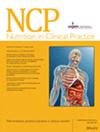Description of the etiological factors behind acute moderate and severe malnutrition in children under 5 years hospitalized at two high‐complexity referral centers: Case series
IF 2.1
4区 医学
Q3 NUTRITION & DIETETICS
引用次数: 0
Abstract
BackgroundAcute malnutrition in children <5 years of age has a direct relationship with medical complications and mortality. We aimed to describe the etiologic factors in children with moderate and severe non–illness‐related acute malnutrition who required hospitalization for treatment of malnutrition in two high‐complexity hospital centers in Bogotá, Colombia.MethodsThis is a multicenter case series (December 2016 to December 2020) including patients aged 1–59 months with a weight/height indicator less than −2 SD. Electronic health records were reviewed, and demographic (sex, age, city of origin, and socioeconomic status) and clinical data (gestational age at birth, edema, and nutrition status) were collected. Descriptive analysis of information was performed. An exploratory bivariate analysis by diagnostic categories of moderate and severe acute malnutrition vs days of hospitalization was also performed.ResultsForty‐five patients were included, 62.2% of whom were male, with a median age of 14 months (Q1–Q3: 7–24). The main etiologic factors of malnutrition were related to problems with total food intake (33.3%), transition in consistency of feeding (31.1%), and breastfeeding technique (22.2%). Only 13.3% had problems related to food insecurity. There were no statistically significant differences between moderate (median: 7 days; Q1–Q3: 5–12) and severe (median: 8 days; Q1–Q3: 5–16) acute malnutrition when compared by days of hospitalization.ConclusionsThe main etiologic factors of malnutrition in our study population were related to problems in the amount of food provided and transition in consistency of complementary feeding.描述在两家高度复杂的转诊中心住院的 5 岁以下儿童急性中度和重度营养不良的病因:病例系列
背景5岁儿童急性营养不良与医疗并发症和死亡率有直接关系。我们旨在描述哥伦比亚波哥大两家高复杂性医院中心需要住院治疗营养不良的中度和重度非疾病相关急性营养不良儿童的病因。对电子健康记录进行了审查,并收集了人口统计学数据(性别、年龄、原籍城市和社会经济状况)和临床数据(出生时的胎龄、水肿和营养状况)。对信息进行了描述性分析。此外,还按中度和重度急性营养不良的诊断类别与住院天数进行了探索性双变量分析。结果共纳入 45 名患者,其中 62.2% 为男性,中位年龄为 14 个月(Q1-Q3:7-24)。营养不良的主要病因与食物总摄入量问题(33.3%)、喂养一致性问题(31.1%)和母乳喂养技术问题(22.2%)有关。只有 13.3% 的人存在与食物不安全有关的问题。按住院天数比较,中度(中位数:7 天;Q1-Q3:5-12 天)和重度(中位数:8 天;Q1-Q3:5-16 天)急性营养不良之间没有明显的统计学差异。
本文章由计算机程序翻译,如有差异,请以英文原文为准。
求助全文
约1分钟内获得全文
求助全文
来源期刊
CiteScore
6.00
自引率
9.70%
发文量
128
审稿时长
3 months
期刊介绍:
NCP is a peer-reviewed, interdisciplinary publication that publishes articles about the scientific basis and clinical application of nutrition and nutrition support. NCP contains comprehensive reviews, clinical research, case observations, and other types of papers written by experts in the field of nutrition and health care practitioners involved in the delivery of specialized nutrition support. This journal is a member of the Committee on Publication Ethics (COPE).

 求助内容:
求助内容: 应助结果提醒方式:
应助结果提醒方式:


